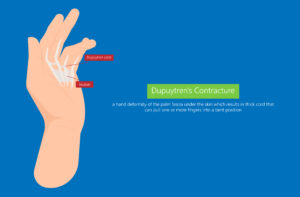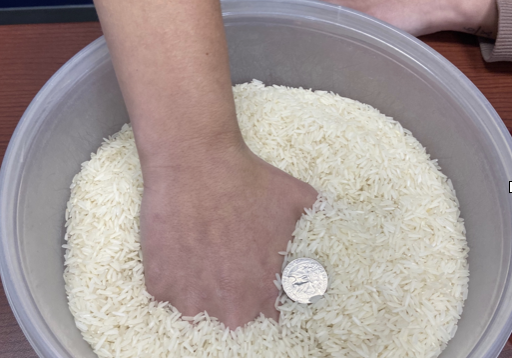Collagenase injection versus Partial fasciectomy in the treatment of Dupuytren’s contracture
Filed under Reviews
Rapid Review By: Shruti Jani
Title: Collagenase injection versus partial fasciectomy in the treatment of Dupuytren’s contracture
Reference: Tay, T. K. W., Tien, H., & Lim, E. Y. L. (2015). Comparison between Collagenase Injection and Partial Fasciectomy in the Treatment of Dupuytren’s Contracture. Hand Surgery, 20(3), 386-390. https://doi-org.mwu.idm.oclc.org/10.1142/S0218810415500288

The Skinny: “Comparison between Collagenase Injection and Partial Fasciectomy in the Treatment of Dupuytren’s Contracture” by Tay et al. (2015) is a comparative study that aims to compare collagenase injection and partial fasciectomy for patients with Dupuytren’s disease. The study aims to determine pre-treatment and post-treatment differences among patients in the net degree of passive extension, complication rate, and patient satisfaction. A total of 37 patients were recruited between August 2002 to January 2005 and were followed up for two years.
In the Weeds: A total of 37 patients with 62 metacarpophalangeal joints (MCP) and 44 proximal interphalangeal joints (PIP) were treated by a single surgeon (HT). The average age of the participants was 65 years for the collagenase injection group and 66 years for the open surgery group. Participants for the collagenase treatment were given the Xiaflex, and partial fasciectomy was done for the surgical group. The inclusion criteria included a flexion contracture in the MCP and PIP joints and a palpable pathologic cord in the hand or finger. The exclusion criteria consisted of patients unfit for surgery due to secondary reasons.
Bringing it Home: In the Collagenase group: pre-procedure contracture at MP and PIP joints averaged 38.9 and 59.4 degrees, respectively. Post-collagenase injection MP and PIP joints averaged 6.5 and 40.6 degrees, respectively. Both of these were statistically significant (p-value <0.05). In the surgery group: pre-procedure contracture at MP and PIP joints averaged 44.8 and 50.7 degrees, respectively. Post-partial fasciectomy MP and PIP joints averaged 3.9 and 6.5 degrees, respectively. Both of these were statistically significant (p-value <0.05).
Overall, the study found that the outcomes at the final follow of both treatments effectively reduce the contracture at MCP and PIP joints. Even though open fasciectomy has a greater reduction of the flexion contractures at MCP and PIP joints, most patients were satisfied with their outcome regardless of the treatment they received. The study depicts that collagenase injection is much more effective in the involved MCP joint than in the PIP joint. Collagenase procedure restored normal finger extension in most patients with an average of 83% passive extension correction in the MCP joint and 32% in the PIP joint.
Open surgery improved the degree of correction in both MCP and PIP joints. A reduction of 91% of the extension deficit was recorded in the MCP joint and 87% correction in PIP joints at the final follow-up after two years. Overall, both options remain viable options for patients.
More To Read
Pediatric Hand Development as it relates to Hand Therapy
Pediatric Hand Therapy and Hand Development by Chelsea Gonzalez It is essential to have an understanding of the major milestones of grasp and upper extremity development when working with younger kiddos so that therapy complements the changes naturally occurring in the brain at each age-level. It is important that babies and toddlers progress through each…
Read MoreTrigger Finger… Quick and Dirty!
This is for you… Hand Therapists! Stenosing tenosynovitis, otherwise known as trigger finger, is a common condition affecting children and adults of all ages. Fast Facts Trigger finger usually occurs at the A1 pulley It occurs with inflammation of the tendons and sheaths of fds and fdp The digit can lock in both flexion and…
Read MoreHand therapy intervention activities for Chemo-Induced Peripheral Neuropathy (CIPN)
Blog Post Written By: Rita Steffes Patients with CIPN may present with symptoms that include numbness, tingling, hypersensitivity to cold, loss of tactile or vibration sensitivity, decreased balance, and shooting burning pain in their hands These symptoms make it difficult for oncology patients to participate in all activities of daily living with dressing, meal preparation,…
Read MoreSign-up to Get Updates Straight to Your Inbox!
Sign up with us and we will send you regular blog posts on everything hand therapy, notices every time we upload new videos and tutorials, along with handout, protocols, and other useful information.





